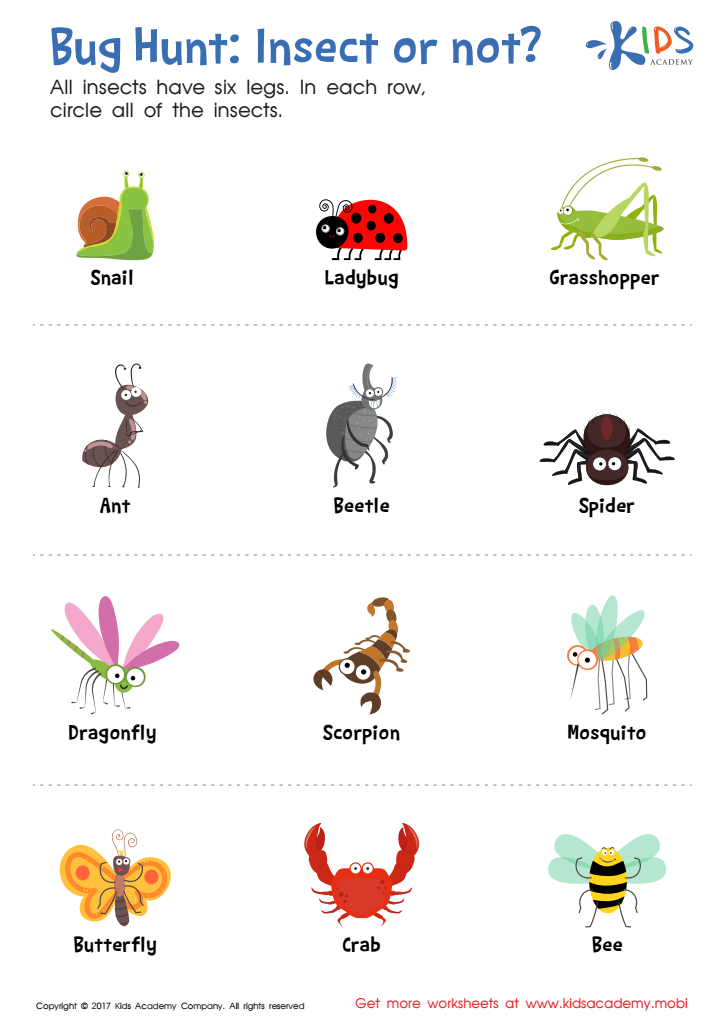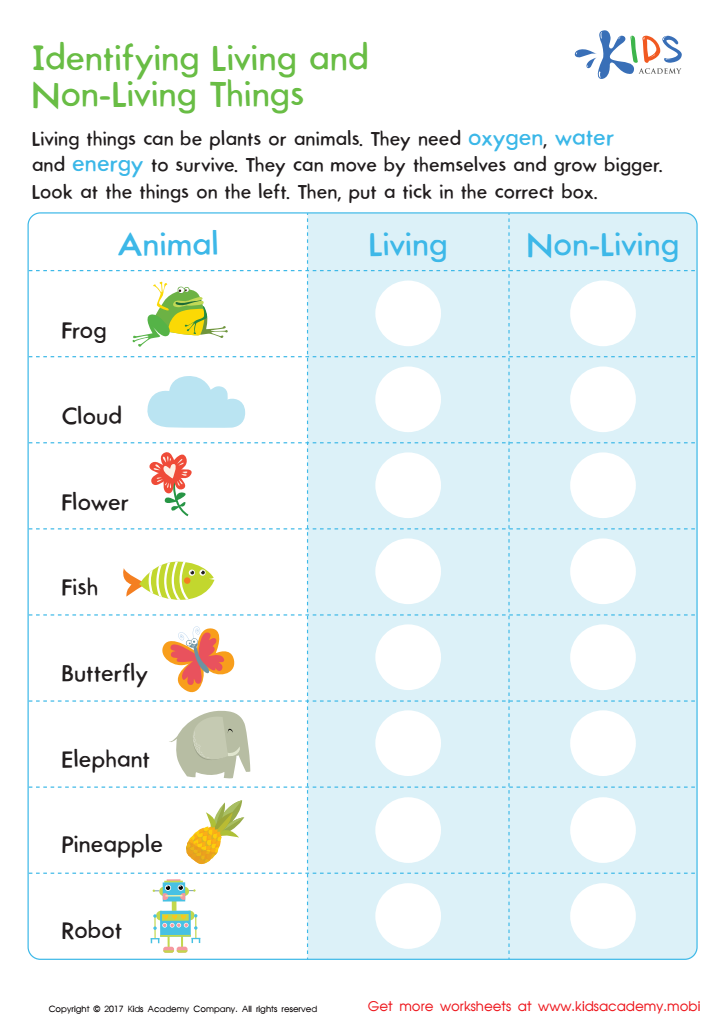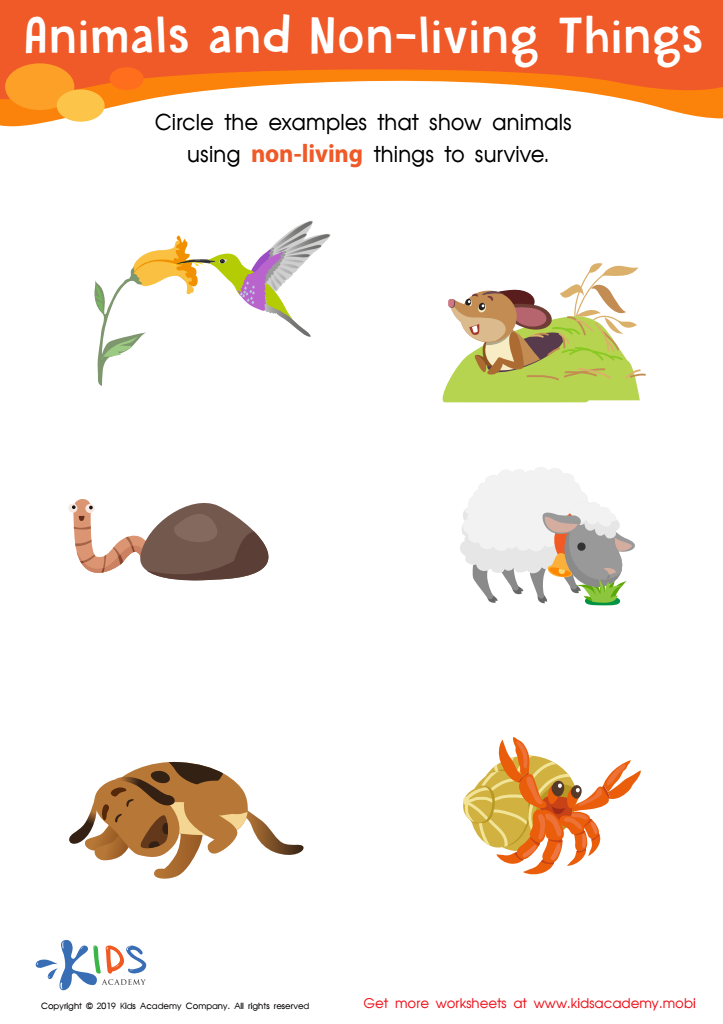Categorization skills Normal Animals Worksheets for Ages 3-9
3 filtered results
-
From - To
Enhance your child's categorization skills with our engaging Normal Animals Worksheets designed for ages 3-9. These specially crafted resources help young learners explore the fascinating world of animals through interactive and enjoyable activities. Children will identify, group, and sort animals, honing their critical thinking and organizational skills. With colorful illustrations and age-appropriate content, our worksheets make learning fun and effective. Ideal for parents and educators, these printables support early childhood development while fostering a love for science. Discover the joy of learning as your child categorizes animals confidently and creatively! Start the journey today with our comprehensive worksheet collection!




Identifying Living or Non–living Worksheet


Animals and Non-Living Things Worksheet
Categorization skills are essential for children's cognitive development, particularly for ages 3-9, as they form the foundation for critical thinking, problem-solving, and academic success. Understanding how to group normal animals helps children make sense of their environment. By categorizing animals based on attributes such as type, habitat, or size, children refine their observational skills and enhance their ability to compare and contrast.
Parents and teachers play a crucial role in this developmental stage. When children learn to categorize, they develop language skills as they learn new vocabulary associated with different animal groups. Furthermore, effective categorization fosters creativity and imagination, as children start drawing connections between concepts.
From a social perspective, nurturing categorization skills also supports collaboration and communication in group settings. Children learn to express their ideas and engage with peers. Engaging activities related to animal categorization—like sorting games, storytelling, or nature walks—promote hands-on learning and can spark a lasting interest in science and exploration.
Ultimately, parents and teachers should care about these skills because they not only enhance immediate learning experiences but also equip children with lifelong abilities essential for academic pursuits and informed decision-making.
 Assign to My Students
Assign to My Students




















